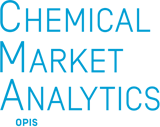- Market Overview
- Key Benefits
- Service Features
- Annual Table of Contents
Market Overview
Duration: Long-term outlook to 2050
Diisocyanates and polyisocyanates are reactive intermediates, which typically are reacted with the hydroxyl groups of polyol coreactants to form polyurethanes. The most widely used diisocyanates and polyisocyanates are aromatic in their composition. A product mixture of polymethylenepolyphenylene isocyanate (also called polymeric MDI or PMDI) and methylene diphenyl diisocyanate (MDI) is derived from aniline (via benzene). The current manufacturing technology of most isocyanates is based on the phosgenation of primary amines, which is complex and usually proprietary technology. As a result, the MDI market is highly concentrated with high barriers to entry. The top five producers—Wanhua Chemical, BASF, Covestro, Huntsman, and Dow—account for over 80% of global nameplate capacity. The high concentration of production and exports within only a few countries and territories contrast with a high number of importers. The largest net importers include Canada, Brazil, Poland, Russia, Turkey, India, Thailand, and Vietnam.
The trend toward a greener, more sustainable future will entail rapidly increasing consumption of insulating materials. MDI is used to produce rigid polyurethane and polyisocyanurate insulation boards as well as spray foam insulation, which have strong insulating properties and are ideal materials to achieve the highest energy efficiency in residential homes and commercial buildings. Another application of MDI is in electric vehicles that require strong, but lightweight materials. As advancements continue in the development of electric vehicles, MDI consumption per vehicle is expected to trend upward to ensure electric vehicles are as light as possible. A third new end use of MDI is for wind turbine blades. Similar to electric vehicles, wind power operators and turbine manufacturers are constantly seeking ways to reduce the levelized cost of energy (LCoE), since the material choice for wind turbine rotor blades directly contributes to wind power generation cost. Furthermore, the more widespread use of cold-chain storage will promote an increased use of insulated warehouses and commercial fridges and freezers that also utilize MDI-based insulation materials.
Key Benefits
Duration: Long-term outlook to 2050
The World Analysis – MDI provides a comprehensive analysis and key insights into critical market developments as they shape the future outlook for the global MDI market.
The following reports, data files, analytical tools and visualization modules are available online and can be downloaded from our website:
- Direct Access to the Subject Matter Experts
- In-depth exploration of present market strategic insights, recognition of key challenges, and presentation of our experts’ forecasts and analysis
- Explanatory Notes detailing data sources, methodologies, unit and conversion factors, and World Analysis deliverables.
- Energy and Economy assumptions
- Price, cost and margin base assumptions forecast and sensitivities analysis, including price assessment methodology, including price definitions across all regions.
- Excel data files with standard supply/demand graphics and price forecasts extended to 2050, trade grids with country and regional trade flows Data appendix (Excel) with supply/demand, capacity and trade tables.
- An online dashboard visualization of capacity, supply/demand, trade grids, and price, cost and margin forecasts
- Supply/demand and capacity database access via data browser
- Data Appendix (Excel) with supply/demand and capacity tables
- Capacity by company/shareholder, capacity integration, top producer/consumer and surplus/deficit capacity ranking, and ownership/subsidiary information
In addition to the main product(s), MDI capacity and textual analysis are provided for the following products:
- Aniline
- Nitrobenzene
This World Analysis contains detailed information on capacities, production, demand, and trade for all significant producing and consuming countries and regions. Although data gathering is essential for understanding history and potential future trends, we believe that the interpretation and analysis of the data is the most valuable information to our clients.
Service Features
Duration: Long-term outlook to 2050
SUPPLY/DEMAND BALANCES
Frequency: Bi-annual
Format: Excel
Timeframe: 10-year forecasts available from periods 1990 – 2050
Area Coverage: By country/region; include “hypothetical” capacity changes in the forecast period
Chemical Coverage: MDI, Aniline
CAPACITY DATABASE
Frequency: Updated daily
Format: Excel
Timeframe: 10-year forecasts available from periods 1990 – 2050
Coverage:
- Nameplate capacity on individual plant location by producer and by the shareholder for main study products + essential derivatives
- Integration table and top producer and consumer ranking tables (includes net surplus/deficit)
TRADE GRIDS
Frequency: Bi-annual
Format: Excel
Timeframe: 1 year of history, up to 10 years of forecast
Area Coverage: Between partner countries and by region
Chemical Coverage: MDI
REPORT WITH STRATEGIC INSIGHTS AND EXECUTIVE OVERVIEW
Frequency: Annual
Format: PDF/HTML
Timeframe: 5-year history, forecast to 2050
Coverage:
- Production economics/snapshots for selected regions/processes
- Production process/technology overview
ADDITIONAL FEATURES
- Access to our global team of subject matter experts
- Interactive data visualization module (dashboard)
- Standard supply/demand graphs
- Data appendix with supply/demand and capacity tables
- Supply/demand and capacity database access via data browser
Annual Table of Contents
- Introduction 4
- Executive Overview 5
- Strategic Insights 8
- Key global trends will drive MDI demand 8
- New applications support sustained high demand growth 9
- Sustainability 10
- Mechanical and chemical recycling 11
- Production Process Overview 14
- Introduction 14
- Phosgenation Process 14
- Nonphosgenation Process 15
- Price Forecast 16
- Methodology 16
- North America 16
- West Europe 17
- Asia 18
- Price Forecast Tables 19
- Supply/Demand Forecast Methodology 21
Market Coverage
Adhesives
Elastomer
Foam
Paint & Coating
Related Products
Related Chemicals
Looking for Short Term Analysis ?
Your Success, Our Priority
In a world where markets evolve rapidly, having the right insights is the key differentiator. Partner with us for critical market insights that propel you beyond competition. Your success is not just a goal, it's our commitment.
Contact us today to revolutionize your approach to business strategy with Market Insights!



